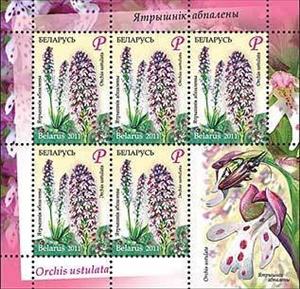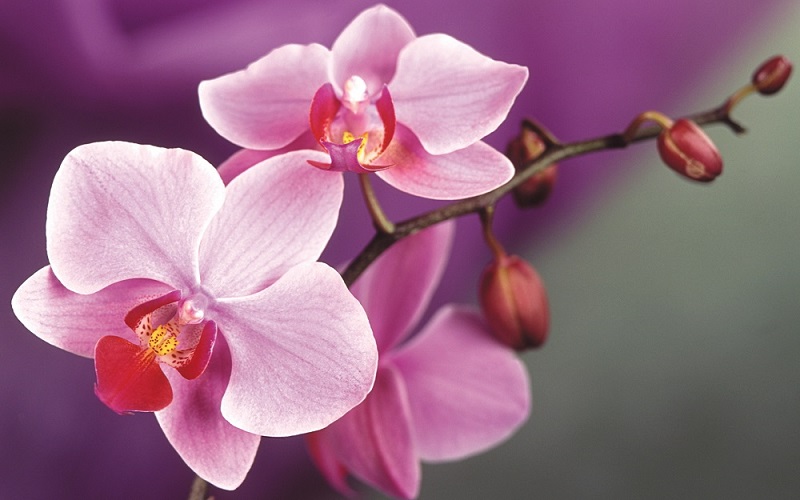Mini Sheet: Orchis ustulata (Belarus 2011)
Orchis ustulata (Belarus 2011)
10 January (Belarus ) within release Endangered plants of Belarus goes into circulation Mini Sheet Orchis ustulata face value 5*P No Face Value
| Mini Sheet Orchis ustulata in catalogues | |
|---|---|
| Michel: | Mi:BY 845a Klb |
Mini Sheet is horizontal format.
Also in the issue Endangered plants of Belarus:
- Stamp - Primula elatior face value H;
- Mini Sheet - Orchis ustulata face value 5*P;
- Souvenir Sheet - Endangered plants of Belarus face value ;
- Mini Sheet - Primula elatior face value 5*H;
- Stamp - Neotinea ustulata (syn.Orchis ustulata) face value P;
- Stamp - Flora - Endangered plants of Belarus - Primula elatior face value H;
- Stamp - Flora - Endangered plants of Belarus - Orchis ustulata face value P;
Mini Sheet Orchis ustulata it reflects the thematic directions:
A flower, sometimes known as a bloom or blossom, is the reproductive structure found in plants that are floral (plants of the division Magnoliophyta, also called angiosperms). The biological function of a flower is to effect reproduction, usually by providing a mechanism for the union of sperm with eggs. Flowers may facilitate outcrossing (fusion of sperm and eggs from different individuals in a population) or allow selfing (fusion of sperm and egg from the same flower). Some flowers produce diaspores without fertilization (parthenocarpy). Flowers contain sporangia and are the site where gametophytes develop. Many flowers have evolved to be attractive to animals, so as to cause them to be vectors for the transfer of pollen. After fertilization, the ovary of the flower develops into fruit containing seeds. In addition to facilitating the reproduction of flowering plants, flowers have long been admired and used by humans to beautify their environment, and also as objects of romance, ritual, religion, medicine and as a source of food.
The Orchidaceae are a diverse and widespread family of flowering plants, with blooms that are often colourful and often fragrant, commonly known as the orchid family. Along with the Asteraceae, they are one of the two largest families of flowering plants. The Orchidaceae have about 28,000 currently accepted species, distributed in about 763 genera. The determination of which family is larger is still under debate, because verified data on the members of such enormous families are continually in flux. Regardless, the number of orchid species nearly equals the number of bony fishes and is more than twice the number of bird species, and about four times the number of mammal species. The family also encompasses about 6–11% of all seed plants. The largest genera are Bulbophyllum (2,000 species), Epidendrum (1,500 species), Dendrobium (1,400 species) and Pleurothallis (1,000 species). The family also includes Vanilla (the genus of the vanilla plant), Orchis (type genus), and many commonly cultivated plants such as Phalaenopsis and Cattleya. Moreover, since the introduction of tropical species into cultivation in the 19th century, horticulturists have produced more than 100,000 hybrids and cultivars.


